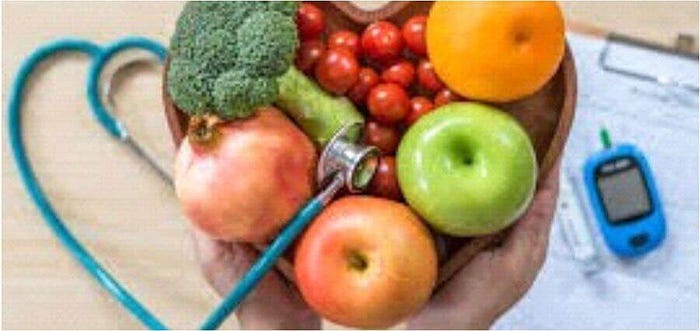Managing Diabetes With A Low Gi Diet: The Low Gi Diet-
This diet focuses on carbs, with the goal of eating foods that produce a steady and slow rise in blood sugar rather th

WRITTEN BY: MUSKAN BARMARE
High sugar levels? Diabetes? Anguished with your medications and Insulin Injections. Have already made an effort to follow The Mediterranean Diet, DASH, Volumetric, the biggest loser, and god knows what else, yet couldn’t revamp your sugar readings? Here’s something you’d find compelling and agreeable.
As a diabetic, what is the main component to focus on? We all know the answer to that one. Carbohydrates. The prime nutrient of a diabetic patient, but carbohydrate alone isn’t the chief, it’s also the type of carbohydrate, and the quantity that you eat is important. That is where low glycemic index foods come into the picture. Studies have shown that a low GI diet may result in weight loss, reduces blood glucose, and reduces the risk of cardiovascular diseases and Type 2 Diabetes mellitus. This article will provide you with detailed guidance to a low GI diet.
Glycemic Index measures the carbohydrate quality, i.e., how much a carbohydrate will affect the blood sugar; it is like a ranking process of foods from 0 to 100 that tells us whether a carbohydrate food will raise the blood sugar(glucose) levels dramatically, moderately or just a little, i.e., at a steady and gradual rate.
The lower the Glycemic index, the better the diabetic parameters for an individual. The GI rating from 56–69 is considered as intermediate or medium, and GI rating 70 or more is examined as high. Carbohydrates with a low GI, i.e., 55 or less, are more considered as it is slowly and well utilized by the body, which causes a lower and slower rise in blood glucose.
how does a low glycemic index diet help with diabetes?
This diet focuses on carbs, with the goal of eating foods that produce a steady and slow rise in blood sugar rather than an immediate spike in the blood sugar created by eating foods that are rapidly digested.
Hence, this helps to keep your blood glucose levels intact and balanced well. The GI of a food can be affected by a number of factors like the type of sugar it contains, the level of ripeness as well the method through which it has been cooked.
With eating a low GI diet, you need to also keep your carbohydrate counting in mind. As carbohydrates have the greatest effect on the blood glucose compared to other macronutrients, protein and fats, keeping track of carbs consumed in meals and snacks can help in diabetes care. Being precise as possible on the carb quality and eating the same amount of carbohydrates every day aids in managing diabetes. Hence, consuming a low GI diet and appropriate carb counting can bring a tighter reign over your glucose readings.
Along with the GI, Glycemic Load goes hand in hand. The glycemic load of a food tells us how much carb content is there in that particular food. The lower the GI and the GL of the food, the better for utilization and slow the rate of rising in blood sugar, more preferable for a person with diabetes.
What should you have in a low GI diet?
Examples of low GI foods consist of carbohydrates such as peanuts, bean sprouts, low-fat curd or Greek yogurt, apples, carrots, multigrain bread, brown rice, quinoa, bajra flour, ragi flour, oranges, banana, all green leafy vegetables, bell peppers, tomatoes, sweet potato, and oatmeal. The more fiber in your food, the better. You’d need to avoid foods high in GI such as refined flour products such as white bread, cakes, etc., starchy vegetables like potatoes, and fruits like watermelon.
There are many potential benefits for those with Type 1DM. Studies have shown that T1DM patients have shown huge benefits of consuming low GI foods on better management and prevention of disease progression to different stages. It manifests in improved blood glucose, and less prone to experience hypoglycaemic episodes as well as reduces the risk of developing T2DM. It is taken into consideration for people with both T1 & T2 DM to use GI as a way to help healthfully manage their condition.
